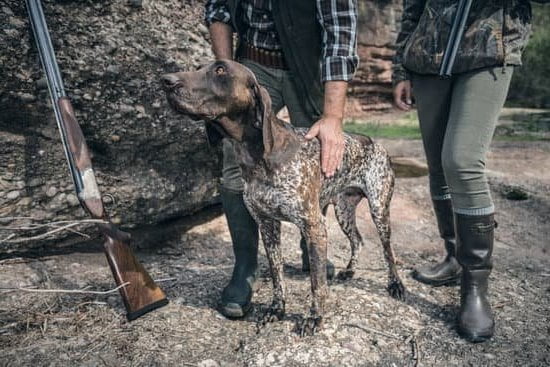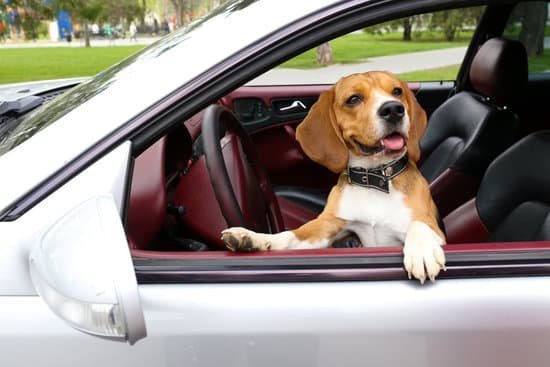Training a very scared dog can be a daunting and challenging task. Understanding the behavior of a frightened pup is crucial in helping them overcome their fears. In this article, we will explore effective training techniques and strategies for dealing with a fearful canine companion.
When dealing with a scared dog, it is important to create a safe and secure environment that promotes trust and confidence. Building a strong bond with your pet through patience and understanding is essential in helping them feel comfortable and at ease.
Desensitization training techniques, counter-conditioning, and positive reinforcement are powerful tools in transforming a scared dog into a confident and well-adjusted pet. Consistency, routine, celebrating small victories, and seeking professional help when needed are also key components in successful training.
By approaching the process with patience, understanding, and resilience, you can help your very scared dog overcome their fears and thrive in the long run. Let’s delve into the various strategies and methods for training a very scared dog.
Creating a Safe Environment for Training
When training a very scared dog, it is essential to create a safe and secure environment for the training sessions. This will help the dog feel more comfortable and confident, facilitating the learning process.
Understanding Your Dog’s Triggers
Before starting any training, take the time to observe and understand your dog’s triggers. Is there a particular sound, object, or situation that causes fear or anxiety in your dog? By identifying these triggers, you can then work on creating a training environment that minimizes exposure to them.
Eliminating Stressors
Once you have identified your dog’s triggers, take steps to eliminate or minimize them during training sessions. This may involve creating a quiet and peaceful space for training, using calming pheromones or music, or adjusting the lighting to reduce visual stressors.
Establishing Safe Spaces
Provide your scared dog with a safe space where they can retreat when feeling overwhelmed during training. This could be a crate, bed, or designated area in the room where they feel secure. Encouraging them to use this space when needed shows that their feelings are respected and helps build trust.
Creating a safe environment for training a very scared dog is crucial for their success in overcoming their fears and anxiety. It sets the foundation for building trust and confidence as you work through desensitization techniques and positive reinforcement.
Building Trust and Confidence With Patience and Understanding
When it comes to training a very scared dog, building trust and confidence is a crucial step in helping them overcome their fears. It’s important to remember that every dog is an individual and may require different approaches to build trust and confidence. Understanding your dog’s behavior and body language is key to effectively building a strong bond with them.
Creating a safe and nurturing environment for your scared dog is essential in building trust. This means providing them with a comfortable space where they can feel secure, as well as setting up predictable routines to help reduce their anxiety. It’s also important to be patient and understanding, allowing the dog to approach you at their own pace and not forcing interactions.
One of the most important aspects of training a very scared dog is using positive reinforcement techniques. This can include using treats, toys, or verbal praise to reward calm and confident behavior. Additionally, consistency in training methods will help the dog understand what is expected of them, ultimately leading to greater trust and confidence.
In addition to positive reinforcement, desensitization training techniques can be effective in helping a scared dog conquer their fears. This involves gradually exposing the dog to the things that trigger their fear in a controlled and positive way.
Seeking professional help from a certified dog trainer or animal behaviorist may also be necessary for more severe cases, as they can provide specialized guidance on how to train a very scared dog. Remember, patience and understanding are key components in successfully building trust and confidence in your scared pup.
Desensitization Training Techniques
Understanding Desensitization
Desensitization is a behavior modification technique used to help dogs overcome their fears and anxieties. It involves exposing the scared dog to the source of their fear in a slow, controlled manner, gradually reducing their reaction to it over time. This technique aims to change the dog’s response from fear or anxiety to one of relaxation or indifference.
Gradual Exposure
One effective desensitization training technique is gradual exposure to the trigger that causes fear or anxiety in the dog. For example, if your dog is afraid of other dogs, start by exposing them to a calm and well-behaved dog from a distance. Over time, gradually decrease the distance between the two dogs as your scared dog becomes more comfortable and relaxed.
Positive Reinforcement
Using positive reinforcement during desensitization training can also aid in its effectiveness. When your scared dog shows signs of reduced fear or anxiety towards the trigger, reward them with treats, praise, or toys. This will help them associate the trigger with positive experiences, further helping to lessen their fear over time.
Implementing desensitization training techniques requires patience and understanding on the part of the owner. Understanding how to train a very scared dog using these methods can assist in helping your pet overcome their fears and develop confidence in challenging situations.
Counter-Conditioning and Positive Reinforcement
When dealing with a very scared dog, it’s important to approach training with patience and understanding. One effective technique for training a scared dog is counter-conditioning, which involves changing your dog’s negative response to a particular stimulus by associating it with something positive. This can help your dog learn to feel more relaxed and at ease in situations that would normally cause fear or anxiety.
One way to implement counter-conditioning is by creating a hierarchy of fear-inducing stimuli for your dog, starting with the least frightening and gradually working up to the most frightening. For example, if your dog is scared of other dogs, start by exposing them to a calm and friendly dog from a distance. As they become comfortable, gradually decrease the distance while providing plenty of treats and praise as positive reinforcement.
Positive reinforcement is another key aspect of training a very scared dog. This involves rewarding your dog for exhibiting desired behaviors or for showing signs of being less fearful. Every time your dog shows even small signs of improvement or bravery, be sure to celebrate with treats, praise, and affection. This will help build trust and confidence while reinforcing positive behavior.
To successfully implement counter-conditioning and positive reinforcement techniques, it’s important to maintain consistency in your training approach. Create a routine for training sessions and be patient as you work with your scared dog. Remember that progress may be slow but celebrate every small victory along the way.
- Implement counter-conditioning by creating a hierarchy of fear-inducing stimuli
- Start with the least frightening stimulus and gradually progress to the most frightening
- Use positive reinforcement such as treats, praise, and affection to reward desired behaviors
- Celebrate every small victory as your scared dog makes progress
Seeking Professional Help and Support
When dealing with a very scared dog, it is important to recognize when you may need additional help in training. While many pet owners are capable of addressing basic behavioral issues, the case of a very scared dog may require professional expertise.
A professional dog trainer or animal behaviorist can provide valuable insight and guidance on how to train a very scared dog. They have the knowledge and experience to assess your dog’s behavior and create a customized training plan that addresses their specific fears and triggers.
Professional help can also provide support for pet owners who may be feeling overwhelmed or frustrated by their dog’s behavior. Working with an expert can offer reassurance and encouragement, as well as practical advice on managing the training process. Additionally, professionals can offer resources and tools for training that are not readily available to the average pet owner.
It is important for pet owners to remember that seeking professional help does not signify failure but rather a commitment to the well-being of their beloved pet. With the right support system in place, both the dog and the owner can work together towards overcoming fear-based behaviors and building trust and confidence in the long run.
Remember that every scared dog is unique, so finding the right professional who understands your dog’s specific needs is crucial in achieving successful training outcomes.
Consistency and Routine in Training
Consistency and routine are crucial when it comes to training a very scared dog. Establishing a regular schedule for training sessions can help your dog feel more secure and confident, as they will know what to expect and when to expect it. Consistency in using the same commands, gestures, and tone of voice will also provide your scared dog with a sense of predictability, making them more comfortable during training.
In order to maintain consistency and routine in training, consider creating a daily or weekly training schedule. This could include specific times for training sessions, feeding, playtime, walks, and rest. By sticking to this schedule, you can help your scared dog feel more at ease with their surroundings and reduce their anxiety.
Additionally, using visual aids such as posters or charts can help reinforce the routine for both you and your scared dog. These aids can serve as reminders of the tasks that need to be accomplished each day and provide a visual representation of what is expected during training sessions. Implementing these tools can contribute to a stable environment for your scared dog, aiding in their overall training progress.
To further ensure consistency in training, consider enlisting the help of family members or friends who can also participate in the training process. This will reinforce the routine across different people or environments, ultimately benefiting your very scared dog’s confidence levels.
- Create a daily or weekly training schedule
- Use visual aids such as posters or charts
- Enlist the help of family members or friends
Celebrating Small Victories and Progress in Training
When training a very scared dog, it is important to acknowledge and celebrate the small victories and progress made in their training journey. Many scared dogs may have experienced trauma or fear-inducing situations, so each step forward is an achievement worth celebrating. By acknowledging these small victories, you can build your dog’s confidence and trust, making the training process much more effective.
One way to celebrate small victories is through positive reinforcement. When your scared dog displays any sign of progress or improvement, such as approaching a new person or experiencing a new environment without fear, be sure to reward them with their favorite treats or toys. This positive association will encourage them to continue displaying that behavior in the future.
It is also important to track your dog’s progress throughout the training process. Keeping a log of their achievements, no matter how small they may seem, can help you see the overall development and improvement over time. This can also be useful for understanding what techniques or environments are most effective for your dog, allowing you to tailor their training accordingly.
Finally, celebrating these small victories can also provide you with motivation and encouragement as a trainer. Seeing your dog overcome their fears and make progress can be incredibly rewarding and can reaffirm your commitment to helping them become more confident and comfortable. Remember that every step forward, no matter how small, is a step in the right direction when it comes to training a very scared dog.
| Celebrating Small Victories | Progress in Training |
|---|---|
| Acknowledge and reward progress | Track your dog’s achievements |
| Positive reinforcement for small victories | Motivation for both you and your pet |
The Importance of Patience and Understanding for Long-Term Success
Training a very scared dog requires immense patience and understanding. It’s important to recognize that scared dogs have likely experienced trauma or fear in their past, making it crucial to approach training with compassion and empathy. Understanding your scared dog’s behavior is the first step in addressing their fears and helping them feel safe and secure. By observing their body language and triggers, you can tailor your training approach to suit their specific needs.
Creating a safe environment for training is essential for the success of your scared dog. This includes removing any potential triggers or sources of fear, as well as providing a quiet and comfortable space for training sessions. By ensuring that your scared dog feels safe, you can build trust and begin developing their confidence gradually.
Building trust and confidence with patience and understanding is key when training a very scared dog. This involves taking small steps, offering reassurance, and never pushing the dog beyond their comfort zone. Developing a bond based on trust will make it easier for your scared dog to engage in training activities. Remember that every small victory should be celebrated, as it signifies progress in overcoming fear and building confidence.
Overall, patience and understanding are fundamental for long-term success when training a very scared dog. Consistency and routine play a crucial role, as do desensitization techniques, counter-conditioning, positive reinforcement, seeking professional help when needed, as well as dealing with setbacks and challenges along the way. By remaining patient and empathetic throughout the training process, you can help your scared dog overcome their fears and lead a happier, more fulfilling life.
Dealing With Setbacks and Challenges in Training
Training a very scared dog can be a long and challenging process, but with patience and understanding, it is possible to help your pet overcome their fears. Dealing with setbacks and challenges in training is inevitable when working with a scared dog, but it’s important not to get discouraged. It’s crucial to remember that progress may be slow, but every small victory is a step in the right direction.
When facing setbacks or challenges in training your scared dog, it’s important to remain patient and consistent. Understanding that overcoming fear takes time is essential for the long-term success of your training efforts. Remember to celebrate the small victories along the way, as they are indicative of progress being made.
It’s also essential to seek professional help and support if needed. Professional trainers or behaviorists can provide valuable insight and guidance on how to train a very scared dog effectively. They can assist in developing personalized training plans and techniques tailored to your dog’s specific fears and anxieties. With the right approach and support system in place, it is possible to help your scared dog build trust and confidence over time.
Frequently Asked Questions
How Do You Train an Overly Scared Dog?
Training an overly scared dog requires patience, consistency, and positive reinforcement. Start by creating a safe and calm environment for the dog, gradually exposing them to their fears while providing rewards for calm behavior.
Can a Fearful Dog Be Cured?
While it may not be possible to completely “cure” a fearful dog, they can learn to manage their fears through proper training, socialization, and desensitization techniques. With time and effort, many fearful dogs can become more confident and less anxious.
How Do You Fix a Skittish Dog?
Fixing a skittish dog involves building trust through positive experiences and gentle exposure to new stimuli. Avoid forcing the dog into uncomfortable situations and instead focus on creating a sense of safety and security for them.

Welcome to the blog! I am a professional dog trainer and have been working with dogs for many years. In this blog, I will be discussing various topics related to dog training, including tips, tricks, and advice. I hope you find this information helpful and informative. Thanks for reading!





